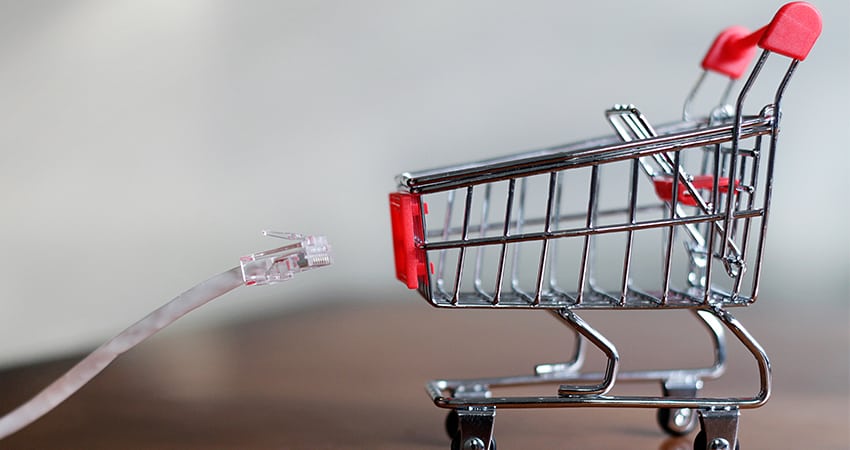Checkout is the most critical part of the ecommerce sales funnel as this is the area where people complete transactions and purchase your products.
Non-optimized checkout is one of the major reasons for cart abandonment and low conversion rate. If it’s too complex, lengthy, or confusing, shoppers will leave. Fortunately, there are some tricks that can help you fix the current issues and start selling more.
Minimize the Number of Fields
When you optimize your ecommerce store, you should always keep shoppers in mind and think what would suit them best.
If you look at the device usage for product browsing and shopping, you’ll see that a high percentage of users prefer mobile devices to explore your site. Thus, it’s necessary to optimize the checkout experience to make it comfortable and easy.
By cutting down the number of checkout fields, you significantly save user’s time filling in forms – a major source of abandonment. As Google Playbook for Retail states, the best-performing ecommerce sites have an average number of 6-8 form fields, while the average one has about 14-15!
One trick that works exceptionally well is replacing the last name and first name fields with one “full name” field. Also, double check whether you really need all the checkout fields or can eliminate some (like the title).
Use Dropdowns Smartly
Dropdowns are popular with shoppers and can also affect user behavior during checkout.
It is not recommended to use the dropdown if you have four or fewer options; instead, use buttons so the shopper sees all options and can choose immediately.
Also, try not to use a dropdown for the credit card type. It’s better if your system automatically determines the user’s credit card type upon entering the digits.
Improve the Form-Filling Experience
Numerous case studies showed that replacement of placeholders with labels leads to a better customer experience and increases the conversion rate. It’s not an ultimate rule but you can perform A/B tests and see whether this trick will work for you.
To save time, introduce autofill for such fields as name, address and phone number. This will also contribute to improving the overall user experience.
Make the Total Price Visible
Another big reason cart abandonment is lack of visibility into the total sale price including shipping and taxes. If the checkout doesn’t show the final price until just before they hit the buy button, it often comes as an unpleasant surprise.
Make sure the total price is justified and visible from the start. In case you have different shipping costs for different countries, allow users to calculate the cost before proceeding to checkout.
Eliminate Exit Points
The less choice the user has, the faster they can make a decision. If the checkout section has “Explore more,” “Back to catalog” and similar buttons, this will tempt shoppers to exit checkout and maybe not return. Try limiting the number of exit points, by just keeping the “Home” and “Back” buttons.
Bonus: What Makes a Good UX?
There are many aspects to creating a frictionless user experience across your store. Here are some of the most overlooked things:
- CTAs: keep them cliché-free and informative. Don’t go for standard “Click here” or “Learn more.” Make them more personal (“Discover our watches”) or add value (“Click here and receive a 5% discount”).
- Add a value proposition to every page. Inform shoppers of the value they get from shopping at your ecommerce store. It could be free shipping, a discount or a gift.
- Replace the search icon with a search bar. Such a minor replacement can boost device usage significantly.
- Always return search results. In case the shopper inputs an incorrect search or your store is out of the product, show your top picks or related products.
Your biggest aim as an ecommerce seller is to satisfy the exact needs of your shoppers. If you provide them with a pleasant and enjoyable experience, chances are very good you’ll build a loyal customer base in no time.
Irina Linnik is a marketing specialist at Onilab

